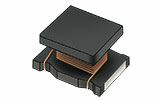source: Murata news
Murata Manufacturing Co., Ltd. has introduced the LQH32NH_23 series wire wound inductor in the 1210 inch size (3.2×2.5mm), ideal for choke applications and signal filter applications in automotive electronic equipment such as ADAS*1 and infotainment systems. The 1210 inch size inductor can withstand a maximum usage temperature of 125°C, conforms to AEC-Q200*2 and features inductance with narrow deviation (±5%). The lineup includes a world leading maximum inductance of up to 560µH. The product starts mass production in August 2017.
The increasing use of electrical and digital functions in automobiles has triggered increased demand for product lines having high reliability and a wide range of inductance for implementation in choke and signal filter applications., In response, Murata revised its design using the consumer electronics oriented LQH32MN_23 as a base, and by improving quality and strengthening its process control it has created a wire wound inductor with a maximum usage temperature of 125°C. The product also conforms to AEC-Q200, and for some inductance value item improve the rated current and provides narrow deviation (±20%) for Rdc (DC resistance).
Going forward, the company will expand its offering of automotive choke inductors and expand its inventory of other inductors as well.
Terminology
*1 ADAS: Advanced Driver Assistance System
*2 AEC-Q200:A reliability standard, from the Automotive Electronics Council ,for automotive electronic parts































